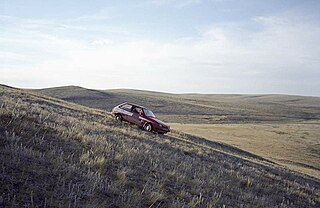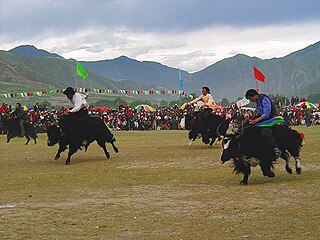 W
WThe 4 Deserts Ultramarathon Series is an annual series of four 250-kilometer (155-mile) races across deserts around the globe. The races were recognized as the world's leading endurance footrace series by TIME magazine in 2009 and 2010, as the "Ultimate test of human endurance". The series was founded by American Mary K Gadams who founded RacingThePlanet in 2002.
 W
WBökhiin Örgöö or Bokhiin Orgoo, literally meaning "Wrestling Palace" in the Mongolian language, is a sports complex (arena) in Ulaanbaatar, Mongolia that is home to the Mongolian wrestling competitions and also hosts music concerts under a lease.
 W
WKhuresh is a traditional Tuvan wrestling, in southern Siberia. The word has cognates with Tuvan's sister Turkic languages, for example Turkish güreş and Tatar köräş.
 W
WThe Mongol Rally is an intercontinental car rally that begins in Europe and ends in Ulan Ude, Russia. The rally originally ended in Ulan Bator, Mongolia. However, to avoid punitive costs and taxes associated with vehicle imports and disposal, the rally now passes through Mongolia and ends in Ulan Ude. The principal launch is from Goodwood Circuit in the United Kingdom, with subsidiary starting points in the Czech Republic. There are three fundamental rules to the rally:Rally vehicles have a 1200cc engine limit Rally teams are unsupported Rally teams need to raise at least £1000 for charity
 W
WMongolia first competed at the Asian Games in 1974, and has participated ten times in the Asian Games until 2014.
 W
WThe Mongolia Charity Rally is the charity rally from London to the capital of Mongolia, Ulaanbaatar. The Mongolia Charity Rally is organised by Charity Rallies, part of Go Help, a UK-based charity.
 W
WMongolian wrestling, known as Bökh, is the folk wrestling style of Mongols in Mongolia, Inner Mongolia and other regions where touching the ground with anything other than a foot loses the match. Bökh means "durability". Wrestling is the most important of the Mongolian culture's historic "Three Manly Skills", that also include horsemanship and archery. Genghis Khan considered wrestling to be an important way to keep his army in good physical shape and combat ready. The court of Qing Dynasty (1646–1911) held regular wrestling events, mainly between ethnic Manchu and Mongol wrestlers. There are several different versions, Mongolian, Buryatian, Oirat and Inner Mongolian.Khalkha bökh, Mongolian wrestling, Khalkha wrestling - traditional Khalkha Mongolian wrestling. Buryat wrestling Bukh noololdoon - Oirat wrestling or Western Mongolian wrestling Southern Mongolian wrestling - jacket wrestling that wear jacket made of cow leather, long pants with chaps over and boots. Khuresh - traditional Tuvan jacket wrestling, in southern Siberia. Influenced by Mongolian wrestling. Khalkha Mongolian and Tuvan wrestlers wear almost the same jacket.
 W
WMongolia first participated at the Olympic Games in 1964, and has sent athletes to compete in all but one Summer Olympic Games since then, being part of the boycott of the 1984 Summer Olympics led by the Soviet Union. Mongolia has also participated in the Winter Olympic Games since 1964, missing only the 1976 Winter Games.
 W
WYak polo is a Mongolian variant of the sport polo. It is played on yaks instead of on horseback.
 W
WYak racing is a spectator sport held at many traditional festivals of Tibet, Kazakhstan, Kyrgyzstan, Gilgit-Baltistan, and Mongolia, in gatherings which integrate popular dances and songs with traditional physical games. For Tibetans in particular it is very special festive occasion.
 W
WIn Mongolian wrestling, the zasuul is a wrestler's helper, also described as a trainer and a second.